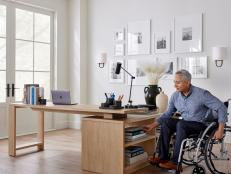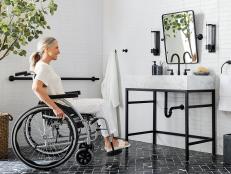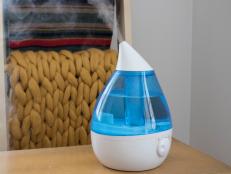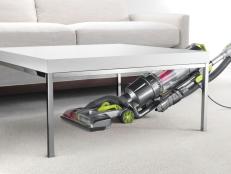How to Age-Proof Your Remodeling

Mary Fisher Knott is 6 feet tall and has a bad back, a physical challenge that make bending difficult. She also is approaching her senior years. As a kitchen and bath designer and a residential space planner, Mary is well-versed on design concepts that can make a home more accessible for the aging and disabled. She offers a number of practical age-proofing ideas for use throughout the home and especially in the kitchen.
Throughout the home:
- Use lever-type handles instead of doorknobs and lever handles for faucets.
- Make doorways 36 inches wide, instead of the standard 32 inches, to accommodate a wheel chair.
- Position light switches 42 inches off the finished floor where they are accessible to someone in a wheelchair and are a comfortable height for most people.
- Use motion sensors for lighting at entry areas of the home.
- Select floor coverings that can accommodate a wheelchair or walker: commercial grade carpet, wood, laminate and ceramic tile with grout joints not more than 3/8-inch wide. For kitchen flooring, Mary often recommends commercial carpet squares, which can be cleaned or replaced.
- Use pocket doors when possible.
- Put dimmers on all light switches, allowing a mix of daylight and artificial light. At night the light level can be changed.
- Use pulldown wardrobe lifts for upper clothes-pole spaces in walk-in closets. Hafele offers such a wardrobe system, which allows the user to pull down the upper rack. The system requires a 48-inch-deep closet.
In the kitchen:
- Provide open spaces in base cabinets accommodate wheelchairs.
- Vary counter heights, and include pullout boards that lock in place for use as extra counter space.
- Install faucets to the right or left of the sink instead of behind it.
- Install appliances at accessible levels. Mary also points out that microwave ovens are usually placed too high. "Ideally, microwaves should only be 8 or 10 inches off the finished counter," she says.
- To make dishwashers more accessible, she suggests elevating them or using dishwasher drawers placed on either side of the sink. Front-loading laundry equipment also can be elevated.
- Select nonreflective counter surfaces and appliances with easy-to-read controls to prevent eye strain.













































